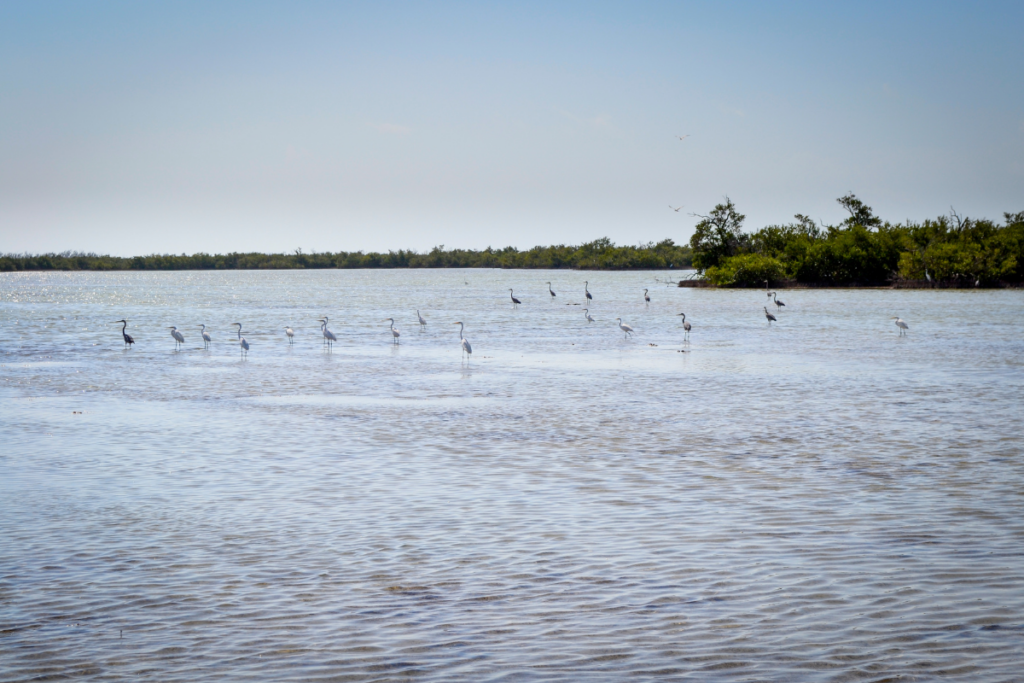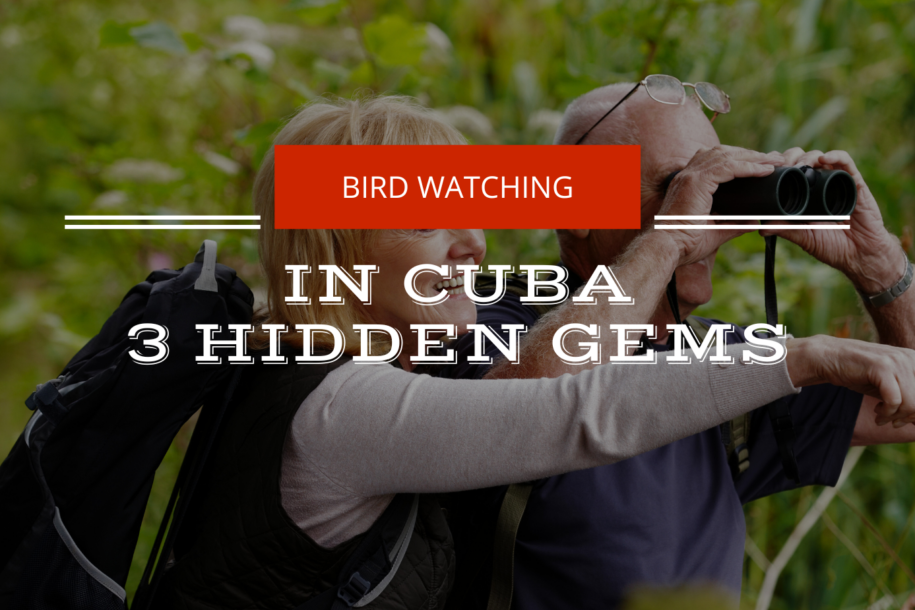Bird watching in Cuba offers a gateway to explore the island’s vibrant culture, stunning landscapes, and rich biodiversity.
From colorful parrots to rare endemic species, the island presents a treasure trove of avian delights. While popular spots like the Zapata Peninsula and Sierra del Rosario draw many birdwatchers, there are lesser-known gems waiting to be explored.
In this comprehensive guide, we delve deeper into the world of bird watching in Cuba, uncovering not only three hidden gems but also providing insights into the diverse avifauna that call the island home.
Table of Contents
Why bird watching in Cuba?

Bird watching in Cuba is an unparalleled experience for several reasons.
Firstly, Cuba boasts a remarkable diversity of bird species, many of which are endemic to the island, meaning they are found nowhere else in the world. This makes Cuba a hotspot for bird enthusiasts seeking to add rare and unique species to their life lists.
Secondly, Cuba’s geographic location in the Caribbean provides a crucial stopping point for migratory birds traveling between North and South America. This means that birdwatchers have the opportunity to observe a wide range of species throughout the year, including both resident birds and those passing through during migration seasons.
Additionally, Cuba’s varied landscapes, including forests, wetlands, mountains, and coastal areas, offer diverse habitats for birds to thrive. Whether you’re exploring lush rainforests, pristine beaches, or remote mountain ranges, each ecosystem presents its own array of avian treasures waiting to be discovered.
Furthermore, Cuba’s commitment to conservation and protection of its natural resources ensures that birdwatchers can enjoy pristine habitats teeming with wildlife. Many of Cuba’s national parks and biosphere reserves offer well-maintained trails and guided tours, allowing visitors to immerse themselves in nature while respecting the environment and wildlife.
Lastly, beyond the birdwatching itself, Cuba offers a rich cultural experience for visitors. From vibrant music and dance to delicious cuisine and welcoming locals, birdwatchers can enjoy a holistic travel experience while exploring the island’s avian wonders.
1. Ciénaga de Zapata National Park
Stretching across the Zapata Peninsula in the Matanzas province, Ciénaga de Zapata National Park is a UNESCO Biosphere Reserve and one of the largest wetlands in the Caribbean. Its diverse habitats, including mangroves, marshes, and forests, provide refuge to over 200 bird species.
Bird watching in Cuba at this park focuses on spotting the Cuban trogon, the national bird of Cuba, with its striking red, white, and blue plumage. Other highlights include the Zapata wren, Zapata rail, and the elusive Cuban pygmy owl. The park’s extensive network of trails and guided tours offer ample opportunities for birdwatching, whether by foot or boat.
For a truly immersive experience, consider staying at one of the eco-lodges within the park. Here, you can wake up to the symphony of bird calls and explore the wilderness at your own pace. With birdwatching tours led by knowledgeable local guides, visitors can gain insights into the park’s diverse avian inhabitants and conservation efforts.
2. Alejandro de Humboldt National Park
Located in the eastern provinces of Holguín and Guantánamo, Alejandro de Humboldt National Park is a UNESCO World Heritage Site renowned for its biodiversity. Spanning over 700 square kilometers, the park encompasses diverse ecosystems, including montane rainforests, coastal areas, and mangrove swamps, providing habitats for a wide array of bird species.
Bird watching in Cuba here offers the chance to encounter some of Cuba’s rarest avian species, including the Cuban parakeet, Cuban solitaire, and the charismatic Cuban trogon. The park’s rugged terrain and remote location make it a haven for adventurous birdwatchers seeking off-the-beaten-path experiences.
Traverse the park’s network of trails, guided by knowledgeable local guides who can lead you to prime birdwatching spots. Don’t forget your binoculars and camera, as you never know what feathered treasures you might encounter along the way. Additionally, visitors can learn about the park’s conservation efforts and the importance of preserving its unique biodiversity.
3. Bermejas Reserve
Nestled in the western province of Pinar del Río, Bermejas Reserve is a hidden gem for birdwatching enthusiasts. This lesser-known reserve boasts diverse habitats, including pine forests, limestone cliffs, and freshwater marshes, making it a hotspot for bird diversity.
Bird watching in Cuba at Bermejas Reserve gives you the opportunity to spot endemic species such as the Cuban grassquit, Cuban parrot, and the striking Cuban trogon. The reserve’s tranquil atmosphere and remote location ensure a peaceful birdwatching experience away from the crowds.
Explore the reserve’s trails independently or join a guided birdwatching tour led by local experts who can provide insights into the area’s avian inhabitants. With its breathtaking landscapes and abundant birdlife, Bermejas Reserve is a hidden gem waiting to be discovered by birdwatchers seeking a unique Cuban adventure.
Frequently asked questions
What is the best time of year for bird watching in Cuba?
The best time for bird watching in Cuba largely depends on what you hope to see. For general bird watching, the best times are during the migratory seasons in spring (March to May) and fall (September to November). During these periods, you can catch migratory birds in addition to Cuba’s vibrant resident species. However, if you’re specifically interested in spotting endemic species in their most active states, the dry season from November to April provides excellent weather conditions and accessibility to various habitats.
Are there any specific regions in Cuba that are particularly good for bird watching?
Yes, several regions in Cuba are renowned for their bird watching opportunities:
- Zapata Peninsula (Ciénaga de Zapata): This area is one of the best bird watching spots in the Caribbean, home to numerous endemic species including the Zapata Wren and the Cuban Trogon. It offers a diverse range of habitats from marshes and woodlands to coastal areas.
- Sierra del Rosario: This biosphere reserve in Pinar del Río is known for its lush forests and mountainous landscapes, providing habitat for species like the Cuban Solitaire and the Great Lizard-Cuckoo.
- Alejandro de Humboldt National Park: Located in the eastern part of Cuba, this park is less accessible but incredibly rich in biodiversity, making it a must-visit for those interested in endemic wildlife.
Do I need a guide for bird watching in Cuba, or can I explore on my own?
While you can certainly explore some areas on your own, hiring a local guide can greatly enhance your bird watching experience in Cuba. Guides not only know the best spots and times to observe specific species, but they are also knowledgeable about the birds’ habits and calls, which can significantly increase your chances of spotting rarer species. Additionally, some protected areas may require a guide for access, and guides can assist with any necessary permits or regulations.
Conclusion
Cuba’s diverse ecosystems and rich avian biodiversity make it a paradise for bird watching in Cuba enthusiasts. While popular destinations like Ciénaga de Zapata National Park and Alejandro de Humboldt National Park attract birdwatchers from around the world, lesser-known gems like Bermejas Reserve offer equally rewarding experiences.
Whether you’re seeking rare endemic species or simply enjoy immersing yourself in nature, Cuba has something to offer every bird enthusiast. So pack your binoculars, lace up your hiking boots, and embark on a birdwatching adventure to uncover the hidden gems of Cuba’s avian paradise.
And remember, in addition to enjoying the spectacle of birdlife, respecting the habitats and supporting conservation efforts are vital to ensuring the preservation of Cuba’s natural wonders for generations to come.
